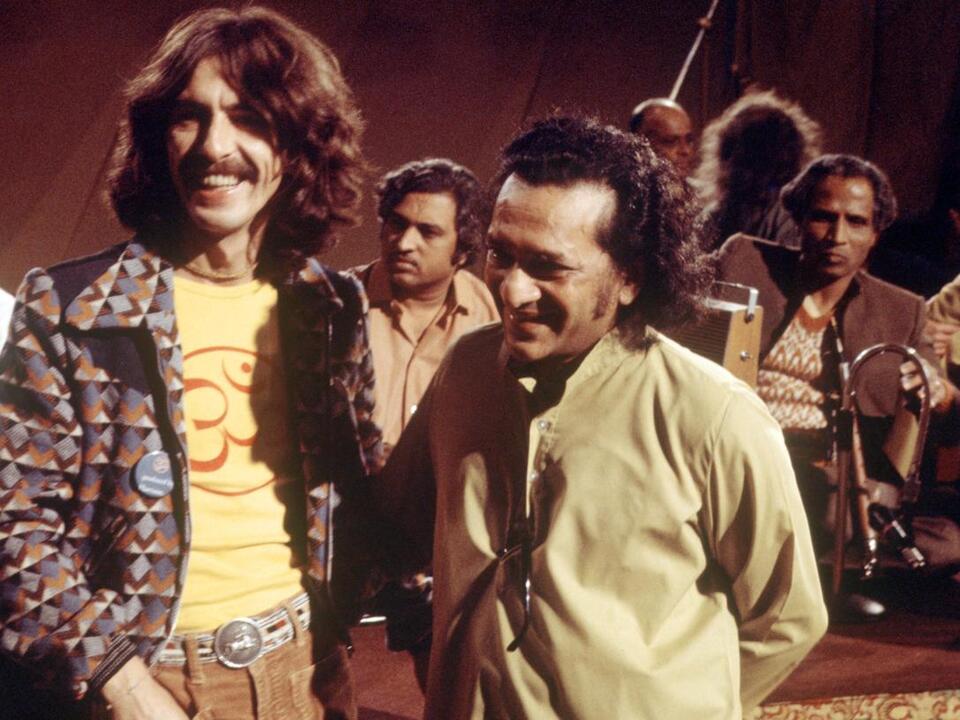Physical Address
304 North Cardinal St.
Dorchester Center, MA 02124
Physical Address
304 North Cardinal St.
Dorchester Center, MA 02124

Renowned music producer Joe Boyd was the first production manager to plug Bob Dylan into an electric guitar at the Newport Folk Festival in 1965. He recalls Pete Seeger walking away in disgust. When I interviewed Boyd half a century later, he surprisingly said he had come to understand Seeger’s reaction. Boyd’s record collection, arranged expansively by country, hinted at the reasons why: India, Indonesia, Iran…
Having produced Pink Floyd, Eric Clapton, Fairport Convention, and Nick Drake, Boyd eventually turned his attention to global music that draws from the rites and roots of its creators. This journey culminates in his new volume, a vast work filled with information and inspiration, written in a refreshingly light style.
Music is an expression of the human experience – encompassing aspirations, tribulations, and celebrations. This book is a history of our world told through music. Though music may stem from a particular heritage, it transcends borders. Boyd’s book explores how rhythms, scales, and melodies have flowed worldwide, constantly evolving as new influences mingled. Especially notable is the influence of the Atlantic Middle Passage, explaining how much great music arose in defiance of colonialism and slavery’s brutal horrors.
After Cuba emerged as a cultural hub in the Americas, “Afro-Cuban” music spread in all directions. The zaraband and chaconne, once branded as lascivious “Negro imports” in Seville, transformed into polite templates fit for Bach and Handel. Later in New Orleans, European harmonic experiments collided with African polyrhythms. What Europe termed syncopation was an African “way of perceiving time.” Boyd’s description of Dizzy Gillespie crossing that “rhythm chasm” is electrifying.
In Brazil, the inventory of musical instruments nearly matches the 134 responses to a 1976 census asking about skin color. When Carnival traditions began in the 1890s, Brazilian authorities tried to restrain Africans from participating too exuberantly. Similarly, generals during the 1964 coup imprisoned Tropicália musicians like Gilberto Gil and Caetano Veloso, who later fled to Notting Hill.
Caetano Veloso’s jailers saw the Tropicálistas’ deconstructions as a greater threat than leftwing agitation.
Boyd writes of “scales, melodies, rhythms, instruments, and folk tales swirling in the mid-Atlantic gyre.” Nigerian drummer Tony Allen, upon hearing bebop, remarked that Nigerians should have played like that, as the music originally came from Africa. “They took it, polished it, and sent it back to us,” he said. Boyd adds, “The dialogue was almost entirely between Africans and their long-lost cousins, whose ancestors had been taken in chains. Their descendants propelled musical modernity; now it was Africa’s turn.”
Ravi Shankar mastered Indian modal scales, where ascending and descending note sequences differ and are not limited to western whole or semitones. This influence reached New York, where John Coltrane infused My Favorite Things with Indian modes, and his epic India was based on a Rajasthani folk melody. Shankar, having met George Harrison and Yehudi Menuhin, altered music far beyond their circles.
A chapter on Russian and Eastern European music finds Boyd at the Koprivshtitsa festival in Bulgaria: “a stunning spectacle with woods and meadows filled with crowds in colorful traditional garb.” But on his return post-communism, “wedding bands played a hybrid of simplified Serbian and Thracian beats at deafening volumes.”
Boyd insists on minimal technological interference in music performance and production. When working with the Bulgarian band Balkana, he convinced them to gather around a single microphone, believing harmonies blend better in the air than through electronic mixers. In concluding, Boyd protests that computer-generated rhythms feel different from those created live by humans.
Boyd illustrates music as a medium for seduction and sometimes liberation from puritanism. Carnal music and music from the earth also aim for the sublime. Boyd explores syncretism in religious music, finding parallels between Christian Saints and African gods among Afro-Cubans, Bahia Brazilians, and American slaves. Their effortless spirituality and musical complexity shine through.
This book primarily depicts music as deliverance from oppression. In South Africa, where white rule stifled attempts at reform, music expressed African anger, hope, misery, and joy. Boyd quotes Hugh Masekela: “The government despised our joy.” Conversely, the USSR strove to eliminate folk music as it symbolized peasant identity. “Wood nymphs morphed into tractors,” Boyd writes, noting how the Soviet regime sought to drain life from musical forms they didn’t understand.
One of Veloso’s jailers viewed the Tropicálistas’ deconstructions as more dangerous than leftwing agitation. Boyd presents “Exhibit A” showcasing humanity’s resilience and ability to create beauty despite horror: the extraordinary sounds created by Congolese musicians even as their land was plundered.
Boyd’s work is the Proust of music history, reclaiming and reaffirming lost music in the present.
(• And the Roots of Rhythm Remain: A Journey Through Global Music by Joe Boyd is published by Faber, £30. )
Source: The Guardian



